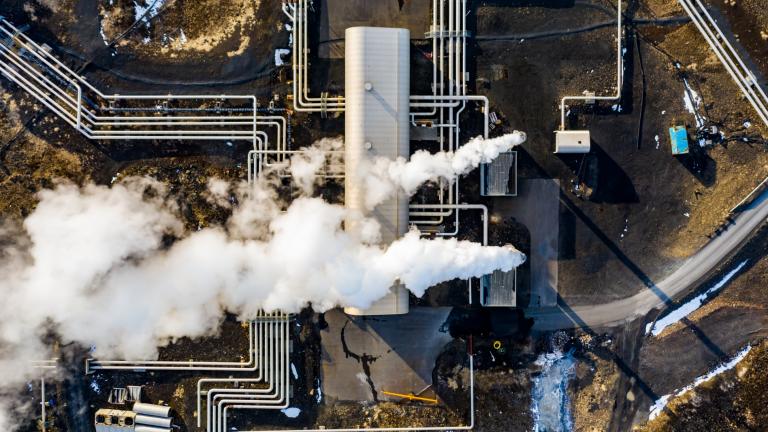
By Casey Crownhart
There’s enough heat flowing from inside the earth to meet total global energy demand twice over. But harnessing it requires drilling deep underground and transforming that heat into a usable form of energy. That’s difficult and expensive, which is why geothermal power—sometimes called the forgotten renewable—makes up only about 0.3% of electricity generation worldwide.
Now, though, it’s getting a boost. The recently passed US infrastructure bill set aside $84 million for the Department of Energy to build four demonstration plants to test enhanced geothermal systems, an experimental form of the technology.
The funding is only a tiny fraction of the DOE’s $62 billion allocation in the infrastructure bill, which also includes money to build more long-distance transmission lines, strengthen the supply chain for batteries, and help nuclear power plants stay afloat. But geothermal researchers say even these limited funds could go a long way in helping transition enhanced geothermal systems (EGS) to commercial use.
“Geothermal is really ready for prime time,” says Tim Latimer, founder and CEO of the EGS startup Fervo.
Geothermal’s appeal is all about consistency: while the electricity output of wind and solar plants varies with the weather and time of day, geothermal power is always on, providing a stable source of electricity.
“It’s really the only baseload renewable,” says Jody Robins, a geothermal engineer at the National Renewable Energy Laboratory. Nuclear power (which is carbon-free but not renewable) can serve a similar role, although cost, issues with waste, and public perception have limited its deployment.
Modern geothermal power plants have been running in the US since the 1970s. These plants generally pump hot water or steam from underground up to the surface to move a turbine and generate electricity. Then the water is pumped back down to maintain pressure underground, so the process can keep going.
Read the full article at: https://www.technologyreview.com/2021/12/08/1041511/potential-geothermal-power-infrastructure-bill/






